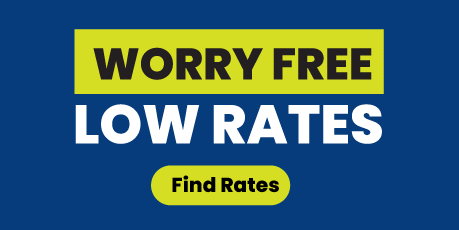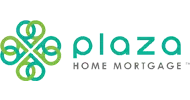How Get Approved Mortgage


How to get approved for a mortgage?
When you understand the process of getting approved for a mortgage, you will be able to confidently navigate through each step knowing what to expect.
Getting a mortgage is not hard, and when you know the following steps, you will save more on the cost of financing, by following these important steps.
Whether you're a first-time buyer or a seasoned homeowner, understanding the mortgage approval process is essential to get a stress-free mortgage approval that maximizes your purchasing power with the lowest rate and fee mortgage loans. f
In this article, we will walk you through the steps involved in getting approved for a mortgage and shed light on important terms and concepts related to the process.
What is the process to get approved for a mortgage?
To get approved for a mortgage, you need to follow these 7 sequential steps that typically include:
- Prequalification
- Pre-approval
- Loan Disclosures
- Loan Submission
- Loan Processing
- Underwriting for Final Approval
- Schedule Closing
Each step plays a vital role in determining your eligibility and obtaining a suitable mortgage.
No credit pulls, spam calls or emails. Just stupid low rates.
Get Pre-Approved or Try the Mortgage Calculator.
7 Steps to Getting a Mortgage Approval?
The mortgage approval process involves a thorough evaluation of your financial profile by a lender to assess your creditworthiness and determine the loan amount, interest rate, and terms you qualify for.
It typically includes a review of your credit history, income and asset verification, and an appraisal of the property you intend to purchase or refinance.
There are 7 simple steps that every mortgage applicant will go through to determine eligibility and have the ability to close and fund the loan request.
Step 1: Get a Mortgage Pre-Qualification:
A mortgage prequalification is an initial assessment by a lender of a potential borrower's ability to qualify for a mortgage loan.
This process involves evaluating the borrower's self-reported credit rating or using a soft pull credit inquiry, income, assets, and other financial information to determine how much they might be able to borrow.
Prequalification is an informal estimate and not a guarantee that a borrower will be pre-approved for a mortgage loan.
Steps to get Pre-Qualified:
- Gather your information: Gross monthly income, list out all debt payments and know your credit score. If purchase then know your down payment and target sales price. If refinance then know your loan balance and estimated home value.
- Use a mortgage pre-qualification calculator: Answer each question to the best of your knowledge.
- Review loan options: Select the loan option that best suits your budget. It is important to identify the lowest annual percentage rate loan as the lowest cost and fee mortgage loan.
You can follow this link to access a pre-qualification calculator here.
IMPORTANT NOTE: If you are not pre-qualified it is important to re-run the mortgage calculator to ensure no mistakes were made or lower the sales price if it is a purchase loan or increases the down payment.
Step 2: Get a Mortgage Pre-Approval.
A preapproval for a mortgage is a detailed evaluation done by a lender to determine if a potential borrower qualifies for a mortgage loan. It is more formal and thorough compared to pre-qualification, which is simply an informal estimate.
A pre-approval gives a borrower an accurate idea of the loan amount, interest rate, and terms they are likely to be approved for based on a comprehensive assessment of their financial situation.
To obtain a mortgage preapproval, borrowers need to complete a mortgage application and provide detailed financial documentation.
Using an online mortgage pre-approval loan comparison mortgage app will help you get pre-approved while identifying the lowest rate and fee mortgage loan in our lender network.
Once you find the loan you like, you can upload your documents to obtain a verified mortgage pre-approval letter.
Rates 1% lower than most banks at Equifund Mortgage® | See real pre-approved loan offers.
Get Pre-Approved Online. See Loan Offers in 3 minutes.
Required Documents for Mortgage Pre-Approval:
This is a common list of documents required for loan approval. However, some applicants have unique borrowing profiles and may require additional documents for final loan approval. This list is provided as general guide and not a rule.
Proof of income:
- 1 month Pay-stubs.
- 2 years W-2 forms or IRS tax returns
- Social Security Awards Letter
- Copy of Pension
- Divorce Decree for Child Support
Proof of assets verifying down payment funds:
- Bank statements
- Investment account statements.
Credit Report:
Lenders will make a soft credit inquiry to check the borrower's credit report and credit score to assess their creditworthiness and repayment history.
Employment verification:
Lenders may verify the borrower's employment status and history to ensure they have a stable income source.
Identification:
Borrowers will need to provide government-issued identification, such as a driver's license or passport.
Lender issues verified mortgage pre-approval letter: Once the lender reviews the borrower's financial information, they will issue a verified pre-approval letter stating the loan amount, interest rate, and terms they are willing to offer. This preapproval letter is generally valid for a limited period, usually 60 to 90 days.
NOTE: It's important to understand that a mortgage pre-approval is not final approval. This means that if anything changes from the date of the loan request you could be denied. Therefore, it is important to not open any new lines of credit, increase your loan balances on credit cards and continue to make payments on time.
No credit pulls, spam calls or emails. Just stupid low rates.
Get 1% off 30 year fixed rates for online loan offers.
Step 3: Initial Loan Disclosures:
In accordance with the (RESPA) Real Estate Settlement Procedure Act of 1974, borrowers who submit a mortgage application must receive initial loan disclosures within 3 days of application or a letter of denial stating why the loan request was denied.
- Initial Loan Application: A formal summary of borrower's income, type of loan request, liabilities and assets, and purpose of loan request and a hard credit inquiry.
- Loan Estimate: Summarizes all closing cost, origination fees, discount points, annual percentage rate, escrows, prepaid, title insurance and title closing fees, cash to close, the purchase price.
- Servicing Disclosure: Notifies applicants of the Lender's present or future desire to sell the mortgage loan.
- Additional loan documents: IRS 4506T request for tax transcripts, Service Providers List, and more.
Step 4: Loan Submission:
Once the applicant completes the e-signing of the initial loan disclosures, and the lender receives all requested income, asset, and identification documents the lender will submit the loan into underwriting for final approval.
The lender will order all title documents, real estate appraisals, and homeowners insurance policies to complete the required documents to issue the final loan approval in preparation for loan closing.
It is common for underwriting to make an additional request for supporting documentation and or ask for letters of explanation as it pertains to each unique applicant's borrowing profile.
Step 5: Underwriting:
The lender's underwriter will review all submitted documents for income verification, assets, and credit report ratings to satisfy the underwriting guidelines for the selected loan program that the applicant has applied for.
In addition, the underwriter is required to verify the accuracy of the real estate appraisal and identify any discrepancies on any documents within this loan submission, such that final loan approval complies with all underwriting guidelines and lending regulations.
Upon satisfactory review of all documents within the loan submission file, the underwriter will issue a "Clear-To-Close" and the file will be transferred to the closing disclosure document preparation team who will validate the numeric values of the transaction in preparation for closing.
Step 6: Initial Closing Disclosure:
After satisfying all underwriting conditions, and receiving a clear-to-close, the lender's document prep team will prepare your Initial Closing Disclosure statement that must be sent to you at least 3 business days before the date of loan closing.
Reviewing the Initial Closing Disclosure:
- Verify that the annual percentage rate did not change by more than .125% from last loan estimate.
- Verify that the loan fees like origination, discount, underwriting, etc. did not change from last loan estimate.
- Verify borrowers estimated cash to close.
- Complete the e-signing in order to close 3 business days after signing.
Step 7: Attend Closing:
Three days after the borrower has completed the e-signing of the Initial Closing Disclosure, the closing can proceed at the scheduled date, time, and location.
Closings for purchasing a home or refinancing usually take place with an Escrow agency that is hired to mediate the transfer of money in exchange for executed mortgage documents and title vesting, also known as warranty deeds, associated with a parcel of real estate.
Important Items for Closing:
- Bring proper Identification.
- Cashier's Check or Wire Transfer required funds for closing.
- Bring your Initial Closing Disclosure.
- Compare the Initial Closing Disclosure and Final Closing Disclosure to verify no significant changes in fees.
- Sign all required loan documents and property transfer documents.
No credit pulls, spam calls or emails. Just stupid low rates.
Get Pre-Approved or Try the Mortgage Calculator.
Summary of The Process of Getting Approved for a Mortgage
The process of getting approved for a mortgage and loan closing has several steps. However, when you have a good overview of the events that will take place and an experienced mortgage lender that is properly staffed and proficient, borrowers will painlessly advance to the finish line with very little effort on their part.
The majority of the heavy lifting to secure mortgages for applicants is delegated to the mortgage lender the applicant selects. Therefore, it is important that vetting mortgage lenders who offer the lowest rates and fees by verifying their ability to close and fund loans without stress is important.







